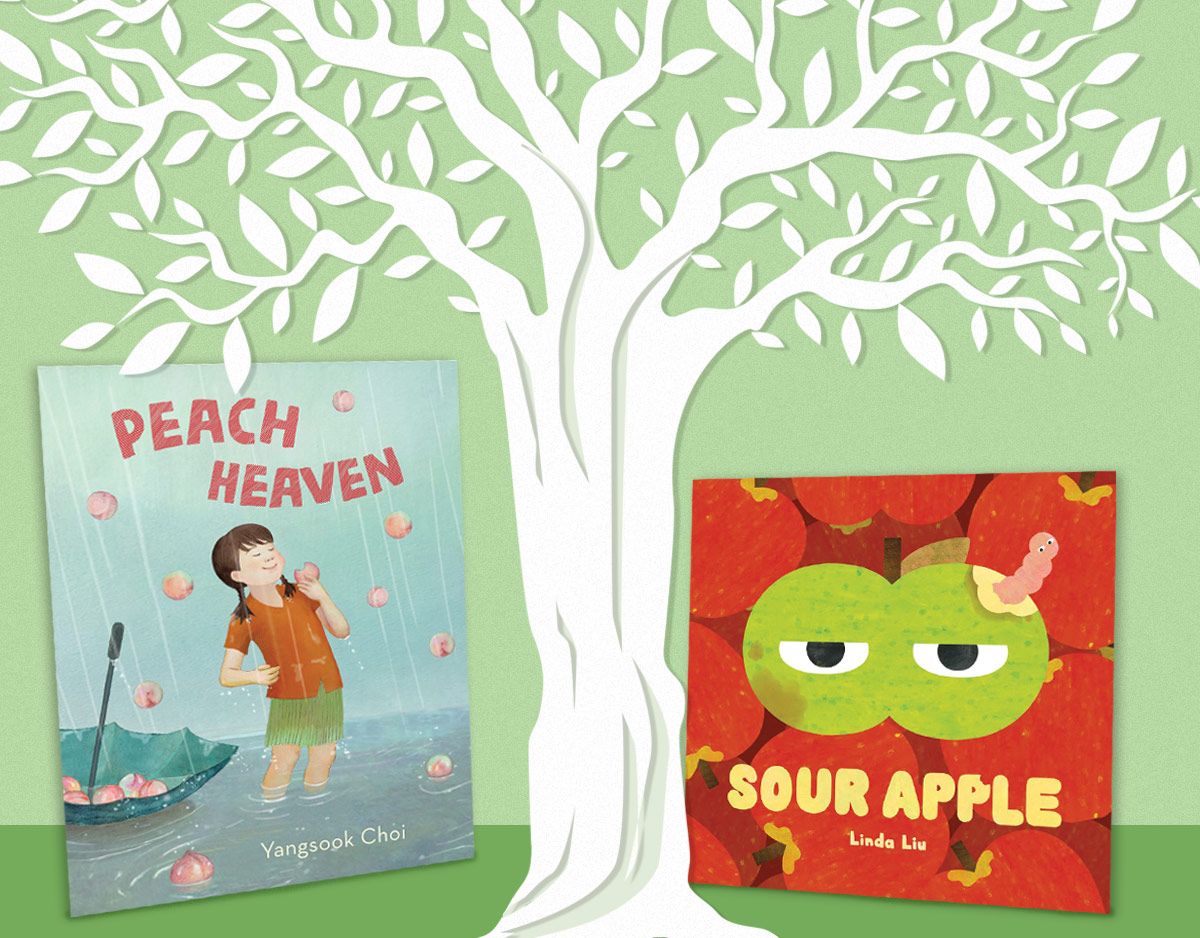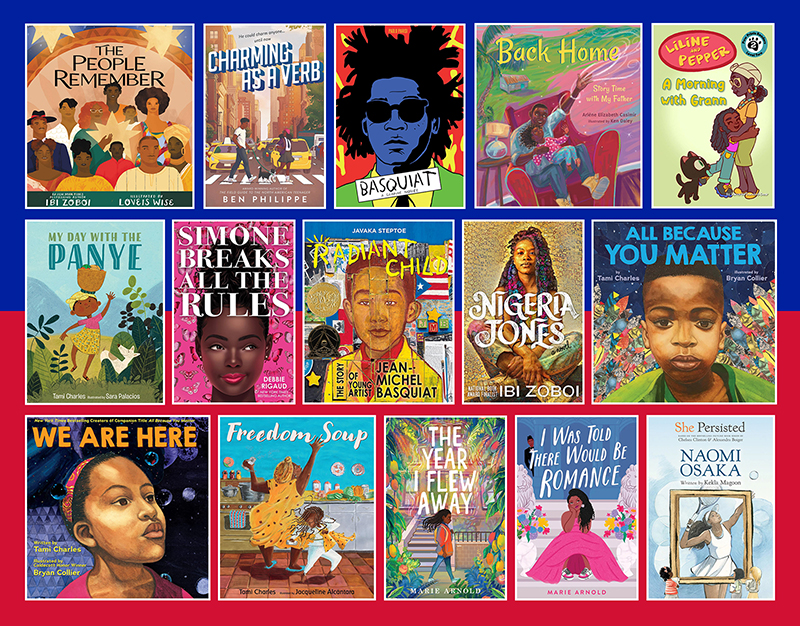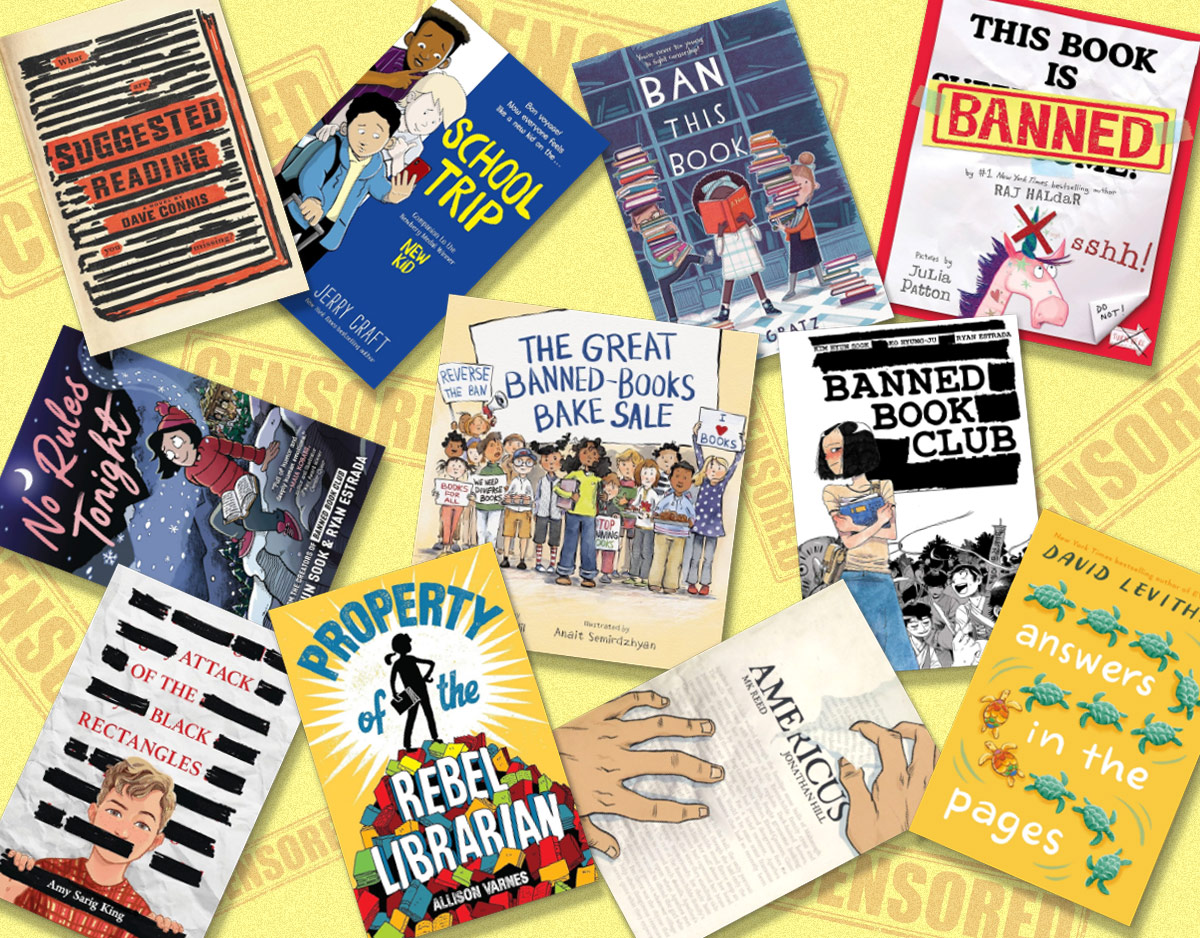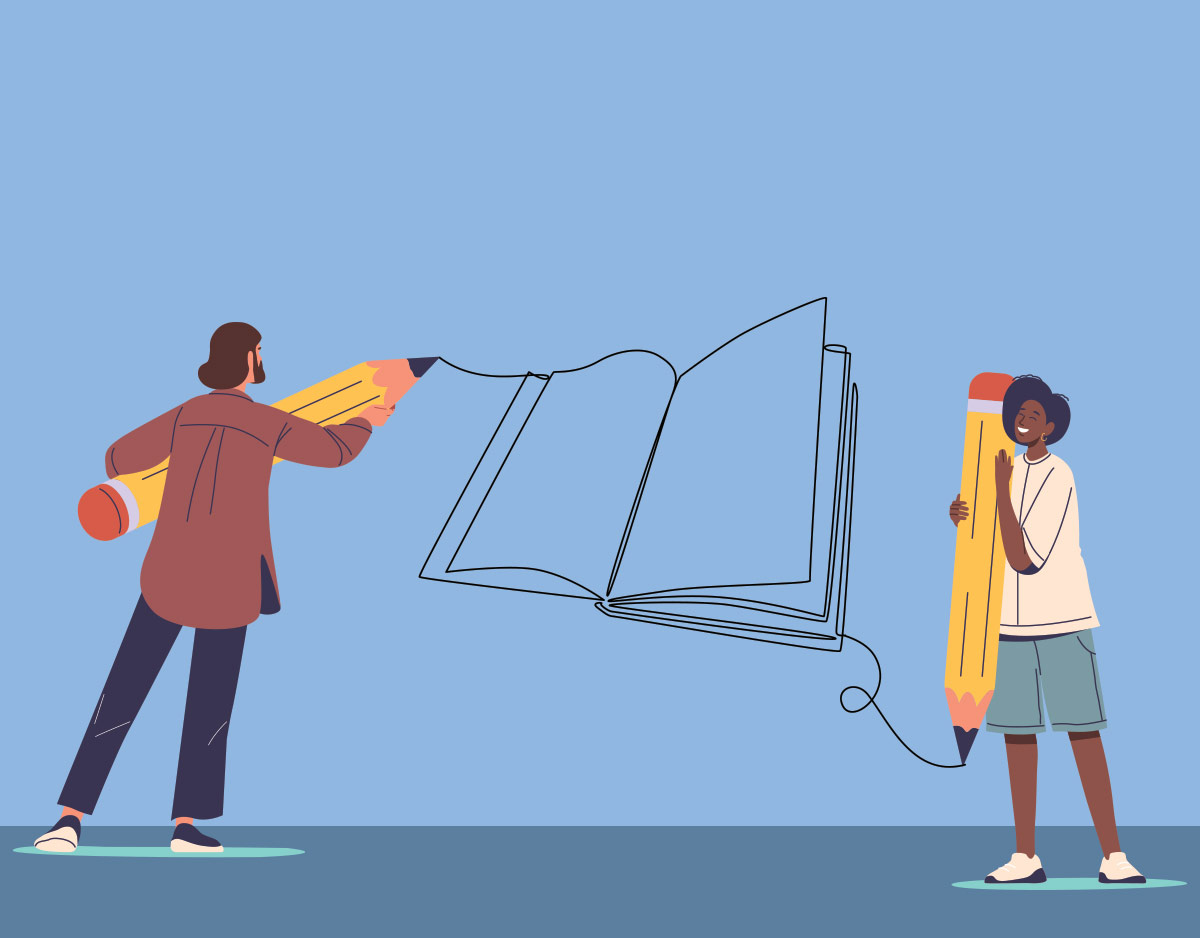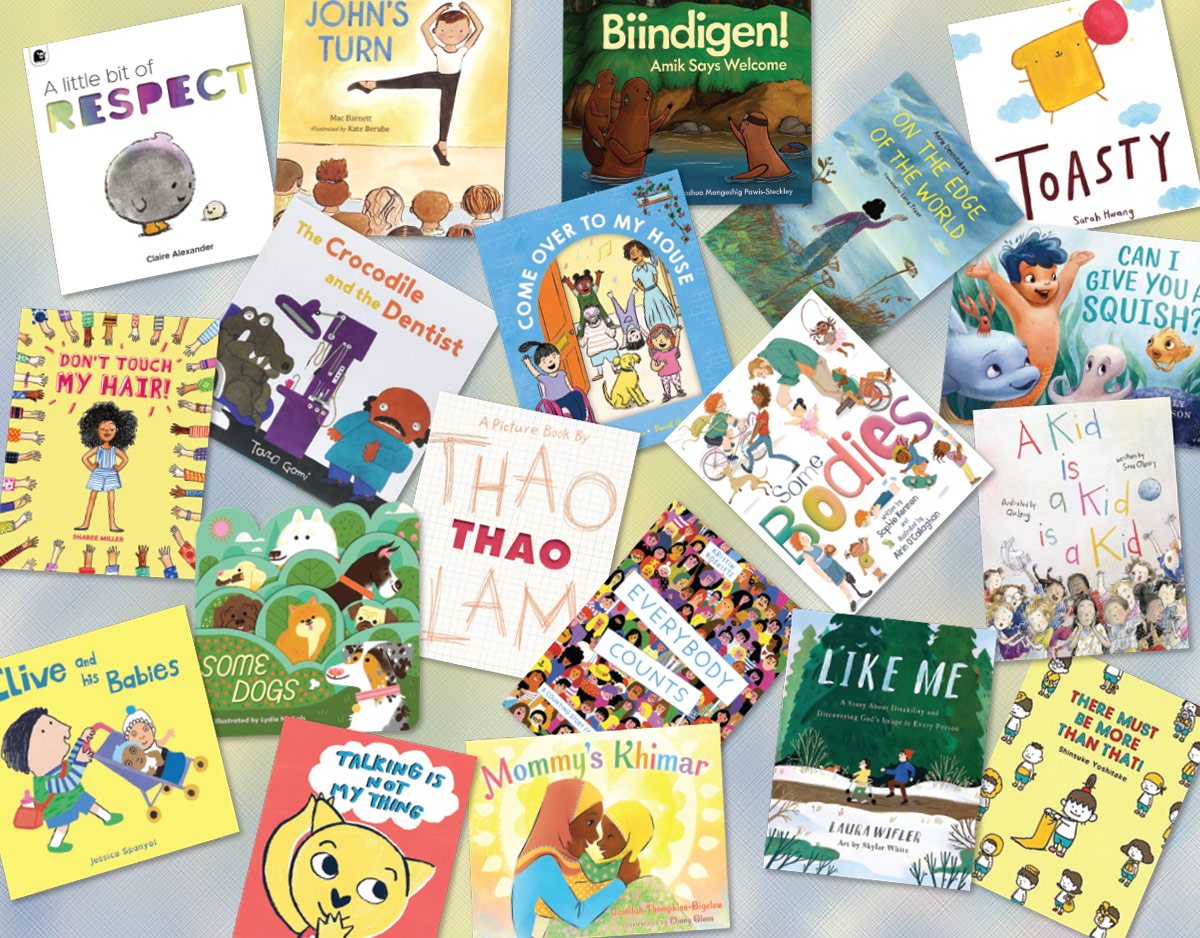Anything for Mom: Shy Willow

Shy Willow
Written and Illustrated by Cat Min
Published by Levine Querido, 2021
ISBN: 978-1646140350
Grades K – 5
Book Review
Just in time for Mother’s Day, Cat Min’s debut picturebook, Shy Willow, chronicles the extraordinary efforts of a shy rabbit to satisfy a boy’s wish for his mother. Min’s vibrant, color saturated artwork closely aligns with this tender yet fantastical narrative about Willow’s altruism in helping Theo, a child in her neighborhood. Unaware that Willow’s home, an abandoned mailbox, was out of service, Theo deposits a hand-written letter in which he asks the moon to shine brightly on his mother’s special day. Shy Willow commits to delivering Theo’s letter. Young readers will accompany Shy Willow on her journey to the moon via Min’s detailed illustrations, which originated as erasable pink pencil sketches on paper. Later, Min applied a layer of watercolor paint. After, she added details and texture to the illustrations using colored pencils. The results make for a visually satisfying sequence of art that perfectly facilitates this tale for repeated read-alouds with mom.
An introduction to Shy Willow with Cat Min:
Teaching Ideas: Invitations for Your Classroom
Note to our Readers: These ideas are not meant to be prescriptive. Choose one. Choose more. It’s up to you. Some ideas are bigger and will take a number of days to complete. Some are shorter. You can also choose to complete one part of a teaching idea, but not the whole thing. It’s up to you!
ADVERTISEMENT
ADVERTISEMENT
Fiction or Nonfiction. The cover of this beautiful book depicts an old-fashioned mailbox. Through the open slot, two long rabbit ears are visible. The narrative begins: “There once was a rabbit named Willow who lived in an abandoned mailbox.” Invite students to discuss whether the story is about a real rabbit or a fictitious rabbit. Could and/or would a real rabbit live in an old mailbox? Why or why not? After completing this book, read other stories in which fictitious rabbits engage with humans such as Beatrix Potter’s The Tale of Peter Rabbit or Charlotte Zolotow’s Mr. Rabbit and the Lovely Present. Invite students to compare and contrast the ways the rabbits behave in the stories.
Rabbit Habitats. If Willow were a real, wild rabbit, where and/or how would she live around humans? What would she need to survive? As a new line of inquiry, investigate the habitat and needs of rabbits. Use the online resources on Epic! or via your local or school library’s ebook system to engage students in reading of a text set about the lives of wild rabbits. Then, read a text set about caring for domesticated rabbits as pets. How are the lives of domesticated and wild rabbits the same and/or different? Invite students to use recyclable art-making materials to represent rabbits’ natural habitats.
Neighborhood Mail Collection Boxes. The double-spread title page of Shy Willow establishes that the old mailbox where Willow lives is adjacent to a large neighborhood playground and a bus stop. Where is the nearest USPS mail collection box in your neighborhood? Invite children to draw a picture or a map of the nearest in-service USPS mail collection box to their home. If necessary, use the USPS online location tool to assist in the process.
Then, encourage students to consider the circumstances that led to Shy Willow’s adventure. Theo did not know that the old gray mailbox was out-of-service. For this reason, he dropped his letter into Shy Willow’s home. If Willow had not retrieved Theo’s letter, what would have happened? Invite students to imagine how the story would differ if Theo’s letter was neither delivered nor opened. Students could work independently or in pairs to write and/or illustrate a different outcome of the story.
Finally, invite students to develop a sign that Shy Willow could hang or display on the gray mailbox to notify other children that the box is out-of-service. What would it say? What kind of advice would the sign offer? Examine the signs that USPS uses on locked mailboxes. As an extension, introduce books about postal delivery such as Ahlberg’s The Jolly Postman.
Write a letter. In this story, Theo writes a letter to ask the moon for a favor: to shine brightly on his mom’s special day. With the students, brainstorm a list of similarly extraordinary gifts associated with lunar, solar, celestial, weather, nature, and/or other natural phenomenon. Using Theo’s letter as a mentor text, have students develop their own fanciful letters to request assistance in honoring their moms’ or other persons’ special day. The letter could then serve as a card or a gift in and of itself for the special person.
For additional books and resources about letter writing, see the Classroom Bookshelf entries for Dear Substitute (Scanlon & Vernick, 2018), Thank You, Earth: A Love Letter to Our Planet (Sayre, 2018), The Day the Crayons Quit (Daywalt, 2013), and The Day the Crayons Came Home (Daywalt, 2015). Also see the picturebooks about letter writing on Epic! and/or via your local or school library e-book collection.
Book Duet. Pair the fantastical Shy Willow with work of contemporary realistic fiction, The Lost Package. The protagonists of both stories go out of their way to make a special delivery on behalf of others, and ultimately make new friendships. Discuss the similarities of the stories and the differences of the genres.
Shy, Brave, and Altruistic. In this story, Willow chooses to depart her “quiet and cozy” to navigate the unpredictable outdoors in order to help someone else. With your students, discuss what it means to be shy, brave, and/or altruistic. How does Willow reflect each of these qualities? Based on your assessments, is the title of the book, Shy Willow, accurate? Invite students to generate new titles for the book that highlight Willow’s other qualities and/or activities in the book. Welcome them to also select and/or create alternate images for the cover art of the book, too.
Daily Observations. As revealed through the detailed end papers and illustrations of this story, Willow keeps an art journal where she draws her observations and records her thoughts. Encourage students to discuss the purpose, meanings, and differences between Willow’s monochromatic drawings at the beginning of the book and her color drawings at the end. Then, invite students to keep a daily journal of their own observations, thoughts, drawings, and wonderings for a week. Reflect with students on the benefits of keeping a journal like Willow’s.
Moon Studies. In this work of fiction, the moon is a character. Invite students to examine other books in which the moon is also a character such as Stead’s, Music for Mister Moon, Carle’s Papa, Please Get the Moon for Me, and Dayrell’s Why the Sun and the Moon Live in the Sky. Encourage students to compare and contrast the portrayal of the moon across the books. Then, engage in a text set of books and resources for learning about the moon. As part of their daily observation journals, described above, invite students to track the moon’s changes over one lunar cycle. For additional ideas, see the Classroom Bookshelf entry for A Full Moon is Rising: Poems.
Papier-mâché. In this story, Shy Willow sacrifices the pages from her beloved journal to create what appears to be a papier-mâché balloon that carries her to the moon. Use Willow’s balloon as inspiration for repurposing and/or recycling everyday materials and creating new objects such as papier-mâché ballon and/or other crafts.
RESOURCES:
New York Times. How to Support Your Shy Kid.
Additional Book about Courage and Bravery
Filed under: Announcements, Beginner Readers, Book Reviews, Fantasy, Fiction, Fiction Picture Books, Picture Books
About Denise Davila
ADVERTISEMENT
ADVERTISEMENT
SLJ Blog Network
One Star Review, Guess Who? (#211)
Cover Reveal and Q&A: Dusti Bowling’s Latest – The Beat I Drum (Apr 2025)
Kevin McCloskey on ‘Lefty’ | Review and Drawn Response
Notable NON-Newbery Winners: Waiting for Gold?
The Seven Bills That Will Safeguard the Future of School Librarianship
Take Five: Newbery Picks, Part Two
Gayle Forman Visits The Yarn!
ADVERTISEMENT



